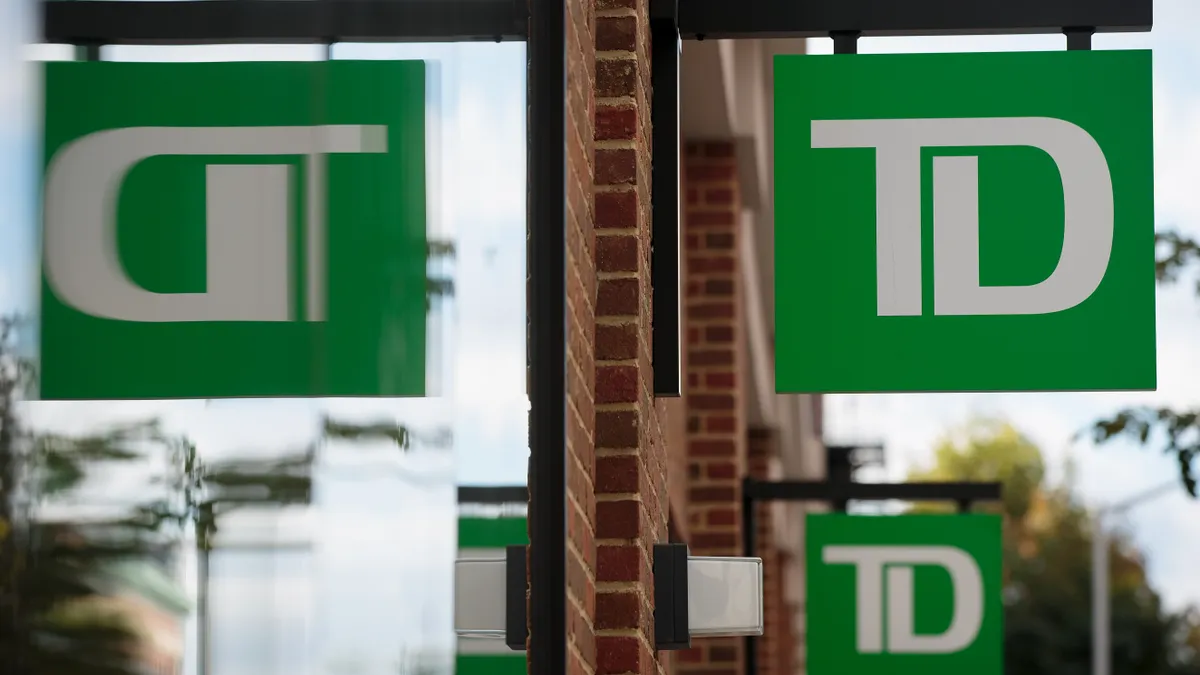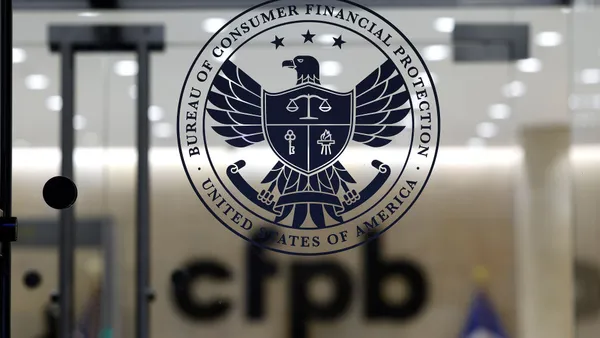UPDATE: April 7, 2022: TD aims to give most employees the option to return to the office this month, ahead of a transition to new working models in June, Bloomberg reported Wednesday, citing an internal memo.
“After more than two years, it’s time to come together again — joining the thousands of colleagues already on-site today,” wrote Kenn Lalonde, the bank’s chief human resources officer. “While the COVID-19 virus will be with us for the long term, and case counts likely to rise and fall, public health units are much better equipped to handle new waves.”
Toronto-based TD isn't the only financial juggernaut to announce this week that it's targeting a large-scale office return in June. Bank of America said Tuesday it wants to return all of its U.S. employees to the office by June 1. And both banks will be mounting those efforts amid an uptick in the COVID caseload in the areas surrounding their financial centers.
Ontario reported 1,074 hospitalizations from the virus as of Wednesday, up from 611 two weeks ago across the Canadian province, according to Bloomberg.
Bank of America's office-return call, meanwhile, comes as the daily case average over the past week is about 1,400, compared with about 1,000 over the past 28 days, according to The Wall Street Journal.
TD employees can expect further details — including the return timeline for specific units and the extent to which certain positions will be a hybrid of remote and in-office work — from business unit leaders, Lalonde wrote.
“This will be a time of listening, learning and building our new workplaces together," he said.
Dive Brief:
- Bank of America plans to return all of its U.S. employees to the office by June 1, Bloomberg reported Tuesday, citing an internal memo.
- The return, for vaccinated and unvaccinated workers alike, will be staged in waves, the wire service reported. Employees will receive 30 days’ notice before their expected return date, the bank said.
- The bank, in late January, asked employees to return in regions of the U.S. where the COVID-19 caseload had begun to decline. The nationwide call, however, comes as the virus’s omicron BA.2 subvariant gains traction.
Dive Insight:
Bank of America’s COVID-19 policy, to this point, has been a bit less defined than those of other banks of its size — and its large-scale return to the office considerably later.
Wells Fargo, for example, set a March 14 office-return date for customer-facing employees and those in enterprise functions, regardless of their vaccination status. The San Francisco-based lender had pushed back its large-scale office return five times — also planned in waves — before postponing it indefinitely in late December.
Citi called its vaccinated employees back to the office at least two days a week beginning March 21. The catch there, of course, is that Citi in October made the COVID-19 vaccine mandatory for its U.S. employees — setting a Jan. 14 deadline for them to upload their vaccination card or to request exemptions. The bank placed about 150 non-compliant employees on leave the following day, according to The Wall Street Journal.
Goldman Sachs, meanwhile, reopened its New York headquarters on Feb. 1 and has since pushed for employees to come to the office five days a week, reportedly keeping attendance by monitoring workers’ swipes in and out of the building and calling employees who more frequently work remotely to remind them of policy.
JPMorgan Chase also welcomed employees’ office returns in February, and last month discontinued twice-weekly mandatory testing of unvaccinated employees. At the same time, it made face-masking optional in its corporate buildings for vaccinated and unvaccinated employees alike. As of this week, it lifted its ban on hiring unvaccinated people and stopped asking employees to report COVID-19 infections and contact tracing.
Bank of America employees, meanwhile, will have some flexibility to work from home but are strongly encouraged to collaborate with colleagues in person, Bloomberg reported Tuesday, citing people familiar with the matter. The bank does not have a vaccination mandate but recommends employees be inoculated and fully boosted.
The office-return call from the nation’s second-largest bank, though, comes as the COVID-19 caseload — in New York City, anyway — is rising. The city’s daily case average over the past week is about 1,400, compared with about 1,000 over the past 28 days, according to The Wall Street Journal.
Some of that uptick can be attributed to the omicron strain’s BA.2 subvariant, which represents about 72% of COVID-19 cases nationwide — and roughly 84% in the region that includes New York among data from the Centers for Disease Control and Prevention (CDC). BA.2 appears to spread more easily than the more established omicron variant, though science hasn’t indicated a difference in the severity of cases.
The COVID spread nationwide, meanwhile, appears to be on a downward trend — with 26,000 new cases reported daily, on average, according to Johns Hopkins University, compared with nearly 30,000 a day in recent weeks.















